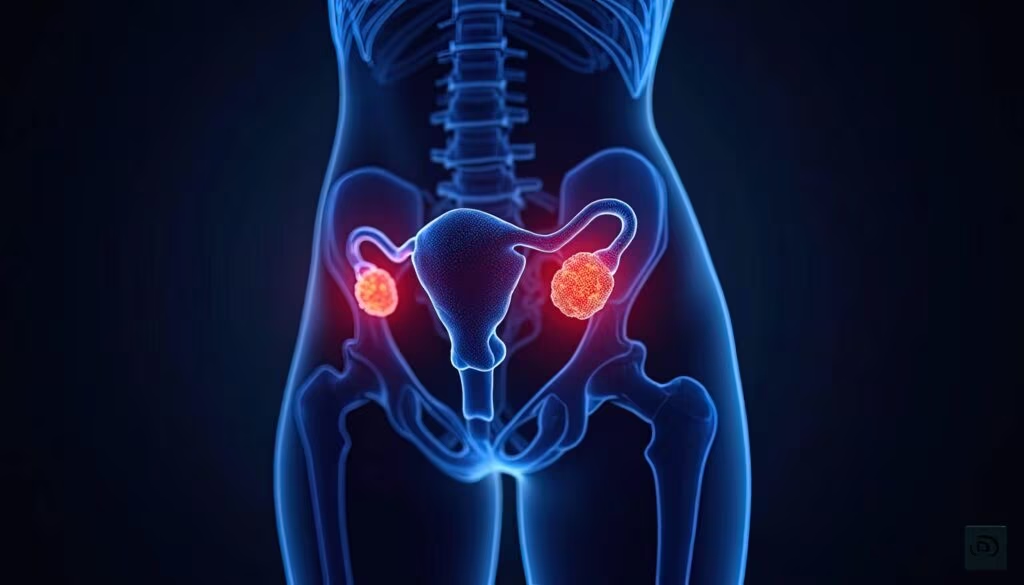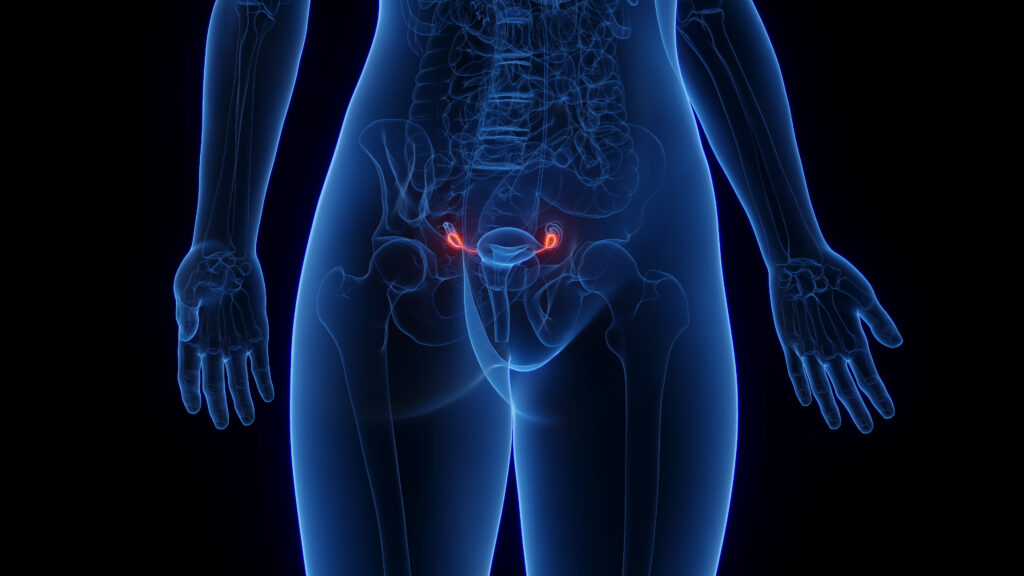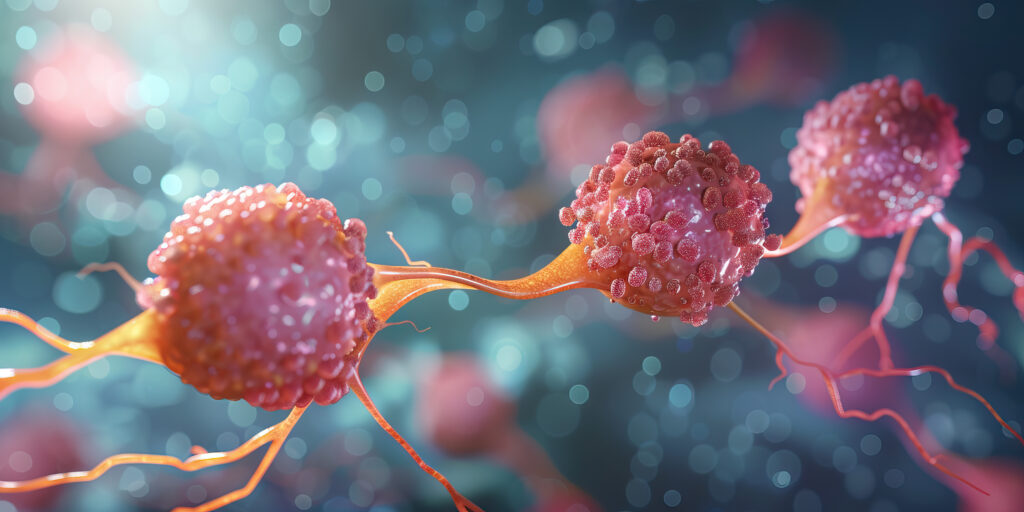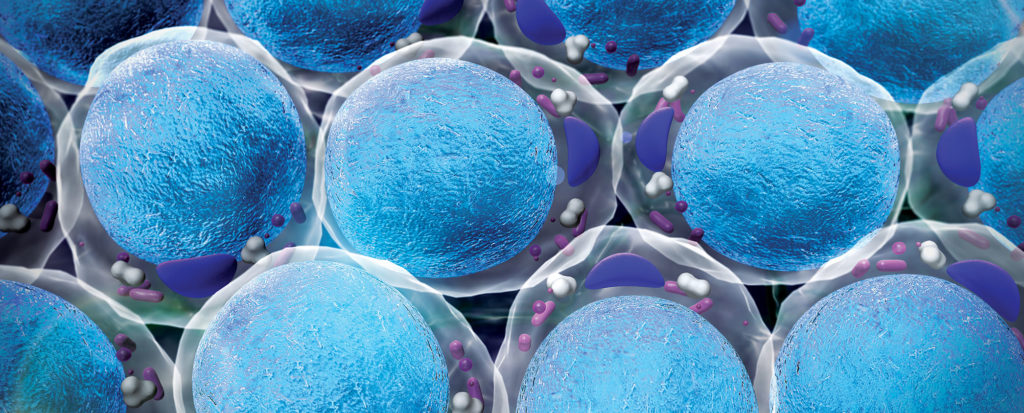PM may be iatrogenic, i.e. secondary to surgical remova of both ovaries (bilateral oophorectomy), or to the irreversible ovarian damage caused by chemotherapy or radiotherapy, either pelvic or total body irradiation.1–9 POF currently encompasses all modalities of ovarian exhaustion when the ovaries remain on-siteSurgical menopause suddenly deprives the woman of total ovarian hormone production. POF, either spontaneous or iatrogenic, has a gradual, insidious evolution over two or more years.
PM may be iatrogenic, i.e. secondary to surgical remova of both ovaries (bilateral oophorectomy), or to the irreversible ovarian damage caused by chemotherapy or radiotherapy, either pelvic or total body irradiation.1–9 POF currently encompasses all modalities of ovarian exhaustion when the ovaries remain on-siteSurgical menopause suddenly deprives the woman of total ovarian hormone production. POF, either spontaneous or iatrogenic, has a gradual, insidious evolution over two or more years.
Occasional ovulation is possible for 2-3 years after POF diagnosis, i.e. follicle-stimulating hormone (FSH) elevation above 40IU/l in two consecutive samples at one-month distance.7Given the trophic role of sexual hormones on body tissues, PM is associated with an increased risk of accelerated ageing; the younger the woman, the higher the risk, unless appropriate hormonal treatment (HT), when feasible, is initiated and adequately maintained at appropriate doses.4,5,10 Morbidity and mortality from cardiovascular disease, stroke, accelerated brain ageing and osteoporosis present a greater risk in PM women compared with controls. Sexual dysfunctions are reported with higher frequency and more significant personal distress after surgica menopause.10 Overall sense of wellbeing and achievement of life goals -specifically having a partner, getting married, having a satisfying sexua life and having children – may be variably affected.4,5,11 Fertility is a major issue in childless women facing PM.1–3This article will focus on the main characteristics of PM and its impact on accelerated general health and sexual ageing, with a specific focus on sexual identity, sexual function and sexual relationships.1–15
Prevalence of Premature Menopause and Associated Female Sexual Disorders
Spontaneous POF affects on average 1% of women under 40 years of age.7,9 Ethnicity is a contributor: the highest figure of POF is reported among African-American and Hispanic women (both 1.4%), and the lowest in Japanese women (0.1%).16 Iatrogenic menopause for benign and malignant conditions affects 3.4-4.5% of women under 40.1–5,17Systematic studies on the prevalence of female sexual disorders (FSDs) in women affected by PM are limited. The prevalence of low desire for younger surgically menopausal women is significantly higher (32%) than that found for pre-menopausal women of the same age (19%). The probability of hypoactive sexual desire disorder (HSDD) increases with age, while the distress associated with the loss of desire is inversely correlated with age.18Aetiology and Diagnosis of Premature Menopause and Health Vulnerabilities
Heterogeneity is the hallmark of the aetiology of PM, which can be genetic, autoimmune, associated with chronic diseases or iatrogenic in the context of benign or malignant disease1–9 (see Table 1). PM impact on health and sexuality varies accordingly. It may be limited in women affected by POF who have a family and are on optimal HT. It may be dramatic when the consequences of PM are superimposed to a serious medical condition that currently contraindicates HT, such as breast cancer, and/or in a childless younger woman.5,19,20 Multiple pathologies – and associated treatments – further increase the risk of accelerated ageing, as exemplified when PM is associated with cancer or autoimmune diseasesImpending PM is hypothesised when menopausal symptoms leading to POF appear in women younger than 40 years of age. Predictors of PM nclude both poor response to ovarian stimulation and raised basal FSH. Definite diagnosis is based on FSH levels above 40IU/l in two consecutive samples at one-month distance.7,9 Echography may show small ovaries for the age, with no or few residual oocytes. PM is implicit when bilatera oophorectomy is performed in women younger than 40 years of age
Factors Modulating Ageing and Sexual Issues after Premature Menopause
The aetiology of PM is the single most powerful biological factor affecting quality of ageing and psychosexual outcome. Age at PM is critical – the earlier the PM, the more complex the impact on general health and sexuality.4,5 Sexual identity is more vulnerable when PM disrupts the process of psychosexual maturity, after peripubertal spontaneous POF or after iatrogenic POF, for childhood or adolescent cancers.4,5 Stage in life cycle may contribute to FSD, with fertility being a major issue in childless women and couples.1–3,5,11Body image concerns, skin changes, changes in body shape and tendency to weight gain and central adiposity may impair the sense of persona attractiveness, contributing to loss of self-confidence and self-esteem and a general sense of ‘feeling and looking older’.4,5,19–21 There is a higher risk of dismetabolic diseases – such as diabetes – in overweight PM women Corticosteroids, when needed to treat an autoimmune pathology – such as lupus erithematosus systemicus (LES) or rheumatoid arthritis (RA) -further increase this risk. Body image issues may become prominent in women who underwent breast or gynaecological oncological surgery and associated treatments causing PM.5,19-21The woman’s health, coping attitude and quality of sexuality before PM may all affect sexual outcome after PM. Women at higher risk of negative sexual outcome after PM are younger, single or in conflicting relationships, childless or with lower education and socioeconomic status.5,19–22The partner’s reaction to the associated infertility and the quality of the relationship before and after PM further modulate the individual’s and the couple’s coping attitudes. Contextual factors – both relational and sociocultural, such as ethnicity – also contribute.1Pathophysiology of Sexual Dysfunction after Premature Menopause
Oestrogens and androgens modulate the neurobiology of brain ageing Their trophic role in neuronal membrane repair, in promoting neurona sprouting and interneuronal connectivity and in controlling neurotransmitter levels, is gaining increasing evidence. They also modulate sexual desire and mental arousal, and the neurovascular cascade of events leading to genital arousal, lubrication and orgasmOestrogens are modulators of sexual response and ‘permitting’ factors for vasoactive intestinal polypeptide (VIP), which ‘translates’ desire and central arousal into vaginal congestion and lubrication. Testosterone has an initiating role on desire and central arousal, acting on the dopaminergic appetitive-seeking pathway, and a modulator role on the peripheral response, as permitting factor for nitric oxide (NO), the main mediator of clitoral and cavernosal bodies congestion.4,5,23The loss of oestrogens and androgens contributes to impaired brain ageing, as exemplified by increased and anticipated neurovegetative, affective and cognitive disorders in PM women. It reduces sexual desire and central and peripheral arousal, causing vaginal dryness, and causes/worsens orgasmic difficulties and dyspareunia, leading to loss of self-confidence and self-esteem and an increase in anxiety and concern. The loss of sexual hormones may also contribute to the neurobiological aetiology of depressed mood that is so often co-morbid with acquired loss of desire, and potentiates the depressive feelings consequent to the many losses PM implies.24Co-morbidity of FSD is frequent. The issue of FSD cannot be separated from the impact on sexuality of concomitant medical co-morbidities associated with or consequent to different etiologies of PM.5
Diagnosis of Female Sexual Disorders after Premature Menopause
FSD may be antecedent to PM, concomitant to PM and/or specifically caused and/or maintained by PM. Diagnosis should consider the multifactorial aetiology of FSD, with special attention to predisposing, precipitating and maintaining factors – both biological and psychosexual, as the disorder can be generalised or situational, lifelong or acquired, and causes differing levels of distressIn stable relationships, counselling to both partners is a crucial part of diagnosis and management. Accurate physical examination is mandatory, given the importance of biological disruptions associated with PM, with focus on trophism of the external genitalia, the vagina and vaginal pH, pelvic floor tonicity and ‘pain map’ in case of dyspareunia.5,25 A poor quality of genital sexual feedbacks is usually an underevaluated contributor of loss of sexual desire in young PM womenExaminations may include plasmatic hormone sample – when POF diagnosis has not yet been established – and vaginal pH. Specific examinations should be considered according to the clinical history and aetiology of PMTreatment of Premature Menopause and Associated Fertility Issues
Tailored HT is the treatment of choice in POF (when non-contraindicated, i.e. in survivors of breast cancer or genital adenocarcinoma, or after thromboembolic disease, acute hepatitis, etc.). Systemic oestrogen treatment (OT) is the choice in women who underwent hysterectomy besides oophorectomy. Topical vaginal OT may address vaginal atrophy and bladder symptoms when systemic OT is not suitable or desiredRecommendations from the European Menopause and Andropause Society (EMAS)26 and the International Society of Menopause (ISM)27 nclude treating PM with HT up until the age of natural menopause (51 years of age), unless a specific contraindication is diagnosed
|
Table 1: Aetiology of Premature Menopause |
|
|
Premature Ovarian Failure: |
|
|
Idiopathic |
|
|
Genetic: |
Turner’s syndrome |
|
Autoimmune: |
Lupus erythematosus |
|
Associated with chronic disease: |
Chronic renal insufficiency |
|
Iatrogenic for benign i conditions: |
|
|
Endometriosis |
|
|
Bilateral disgerminoma |
|
|
Ovariectomy concomitant to hysterectomy |
|
|
Iatrogenic in women at risk of ovarian cancer: |
|
|
BRCA1 and/or BRCA2 carrier |
|
|
Iatrogenic for established malignant conditions: |
|
|
Bilateral oophorectomy |
|
|
Chemotherapy |
|
|
Pelvic radiotherapy |
|
|
Total body irradiation |
|
Adapted from Graziottin & Basson, 2004.5Prevention of infertility in women facing impending POF is critical in childless women. Three lines of research are currently raising new hopes in the pursuit of fertility protection in young women Cryopreservation: a) of oocytes is an option in women with impending POF; b) of embryos is feasible, but requires a cycle of in vitro fertilisation (IVF) – time before cancer treatment may be a key limiting factor;28 and c) of ovarian tissue is promising.1 Temporary ovarian suppression with goserelin may be an option for women with OR-positive breast cancer.29However, with an impending PM the current possibility of having a child is very small. An honest disclosure of current limits of all these techniques should be clearly acknowledged in counselling with patients and their partners
Management of General Health and Sexual Issues Associated with Premature Menopause
The most important sexual issues are related to: 1) age, physical and psychological impact of PM; 2) effects of oestrogen and androgen loss on general and sexual health; 3) severity of menopausal symptoms; and 4) loss of fertility and its meaning to both partners.5 An interdisciplinary approach offers the best opportunity to tailor treatment according to the needs of the woman and/or the couple. HT is the aetiological treatment, when feasible, that may minimise the impact of PM on general health and menopausal symptoms and signs. The focus here will be on treatment of FSD associated with PM
Medical Management of Female Sexual DisordersDesire and Central Arousal Disorders
Desire and central arousal overlap. Randomised controlled trials (RCTs) indicate the positive effect of testosterone in oestrogen-repleted women after surgical menopause, when aetiology appears to be hormone-dependent. In RCTs, treatment with 300µg/day testosterone patches on oestrogen-repleted women significantly increased sexual desire and frequency of satisfying sexual activity, reduced sexual distress and was well tolerated.12-15 Two systematic reviews of RCTs indicate a positive effect of testosterone on all dimensions of sexual function, as well as some psychological benefits.24,30Secondary outcomes indicate a significant improvement of arousal, orgasm, self-image and self-esteem, and a significant reduction in anxiety and concerns. The testosterone patch treatment was approved by the European Agency for the Evaluation of Medicinal Products (EMEA) in July 2006. However, controversy still exists with respect to the indication of androgen therapy in women.3 Tibolone and HT with estradiol and noretisterone are other options to mprove sexual desire. Bupropion is a non-hormonal drug that may also mprove sexual desireGenital Arousal Disorders
Vaginal dryness – the most common complaint of genital arousa disorders – can be treated with vaginal oestrogens.32 The safety of vagina oestrogen therapy has been documented in RCTs and in observationa studies such as the Million Women Study, with the relative risk (RR) of breast cancer being 0.67 for whatever type of vaginal oestrogen usedVaginal oestrogenic treatment is indicated when the genital arousa disorder causes and/or is associated with vaginal dryness, dyspareunia, post-coital cystitis, urogenital atrophy and/or urinary incontinence, mostly of the urge type.5,25 Accelerated urogynecological co-morbidity will be delayed with appropriate HT. Early vaginal oestrogenic treatment, pelvic floor stretching and vaginal moulds – which maintain vaginal elasticity, optimal length and ‘habitability’ during pelvic or vaginal radiotherapy for squamous cervical cancer – may minimise the impact of radiotherapy on vaginal tissueTestosterone cream (2% in vaseline jelly or petrolatum) applied in minimal quantity daily to the
ulva may anecdotally improve vulvar trophism, clitoral sensitivity, genital arousability and erotic response. It may therefore improve the genital feedbacks that may contribute to the maintenance of sexual desire and central arousal. However, controlled studies are lacking
Orgasmic Disorders
True orgasmic disorder acquired subsequent to PM may benefit from HT. Increasing evidence supports a positive role for testosterone in restoring orgasmic potential.12–15,24,30 Pelvic floor rehabilitation is ndicated when hypotonia is diagnosed as contributing to reduced orgasmic sensations. Co-morbid urge or stress incontinence with fear of leakage with orgasm should be appropriately addressed.5
Sexual Pain Disorders (Dyspareunia)
Dyspareunia requires a careful pathophysiological understanding of its complex biological aetiology (muscular, endocrine, vascular, nervous, mmunitary, iatrogenic, etc.) and meaning in order to design an effective treatment.25 Friction introital dyspareunia, secondary to vaginal dryness, may benefit from vaginal OT. Reflexive pelvic muscle tightening (‘hyperactivity of the elevator ani’), secondary to pain, may benefit from self-massage and stretching, electromyographic biofeedback and/or physiotherapyPsychosexual Management
Psychosexual support to improve FSD includes: individual behavioura therapy; psychotherapy to cope with the many losses PM and its aetiology have caused on health and sexuality; and couple therapy to address nonsexual couple issues, such as conflicts, poor erotic skills or communication inadequacies. When lack of orgasm is associated with poor arousal, the latter is the first focus of psychosexual treatmentIn case of dyspareunia, psychosexual therapy includes behavioura therapy, vaginal inserts/moulds, progressive rehabilitation of the pelvic floor and, if necessary, pharmacological treatment for any intense phobic avoidance
Conclusions
PM accelerates general health and sexual ageing, unless appropriate HT – when non-contraindicated – is initiated and maintained over time Reports of FSD increase after PM. Women with PM are at higher risk of distressing sexual disorders. RCTs indicate that HT with oestrogen and testosterone may have a positive effect on all domains of sexual function, especially after surgical PMPositive outcomes of RCTs on 300ng testosterone patches in treating desire disorders (and associated FSD) in surgically menopausa women may offer more effective pharmacological options for women complaining of FSD after PM. However, women and partners should be informed about the ‘lag time’ (up to two or three months) between onset of treatment with testosterone patches and sexua mprovement. This ‘waiting time’ could be constructively used to address concomitant psychosexual issues (personal and/or partner related) and to (re-)explore the sexual map after the difficult period of PM diagnosisMore studies are needed: to improve fertility protection in women undergoing POF; to evaluate the long-term safety of HT and its efficacy in reducing the accelerated ageing associated with PM; and to assess the more effective treatment strategies to address the sexual complaints of women (and couples) after PM. ?
Disclosure
Alessandra Graziottin is currently a member of the speaker’s bureau of Bayer-Schering Pharma, Janssen-Cilag, Pfizer, Procter & Gamble and Valeas and Wyeth. Dr Graziottin is also a Consultant to Epitech Lab and Theramex.












